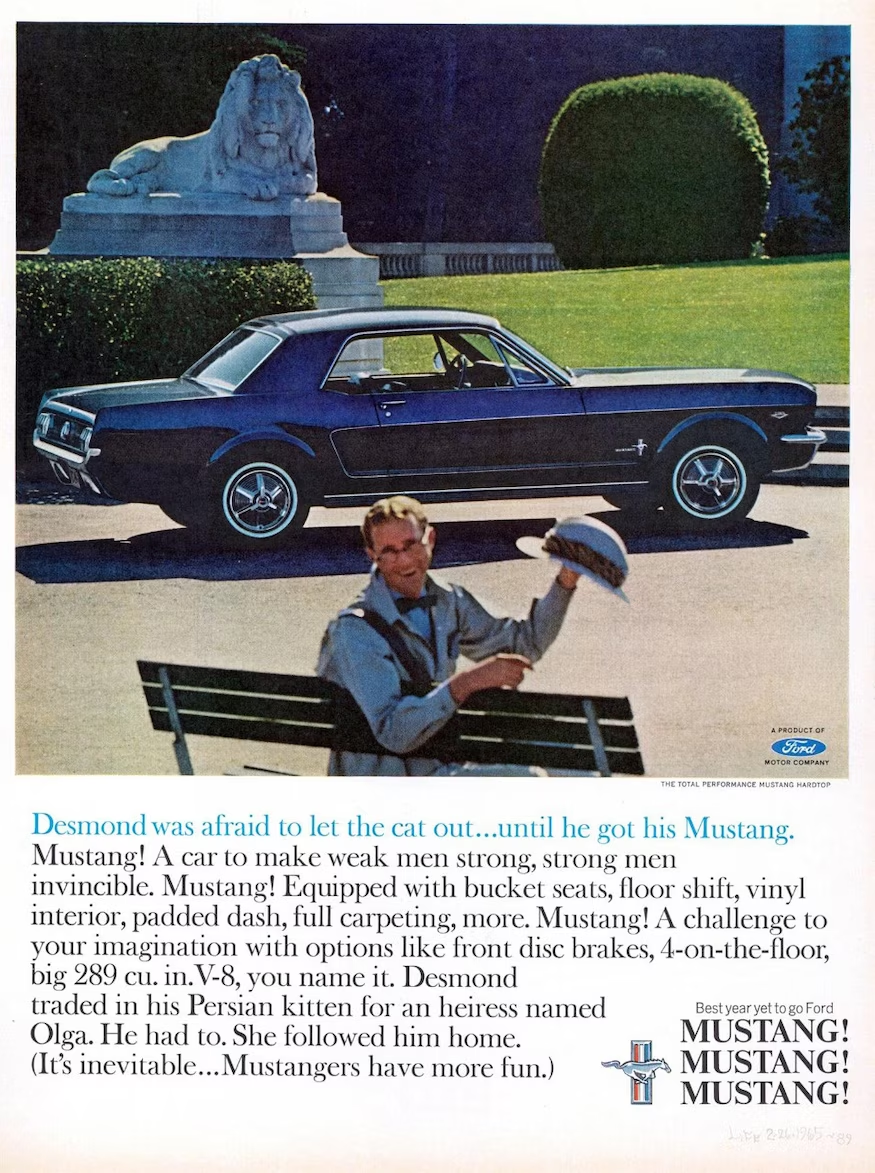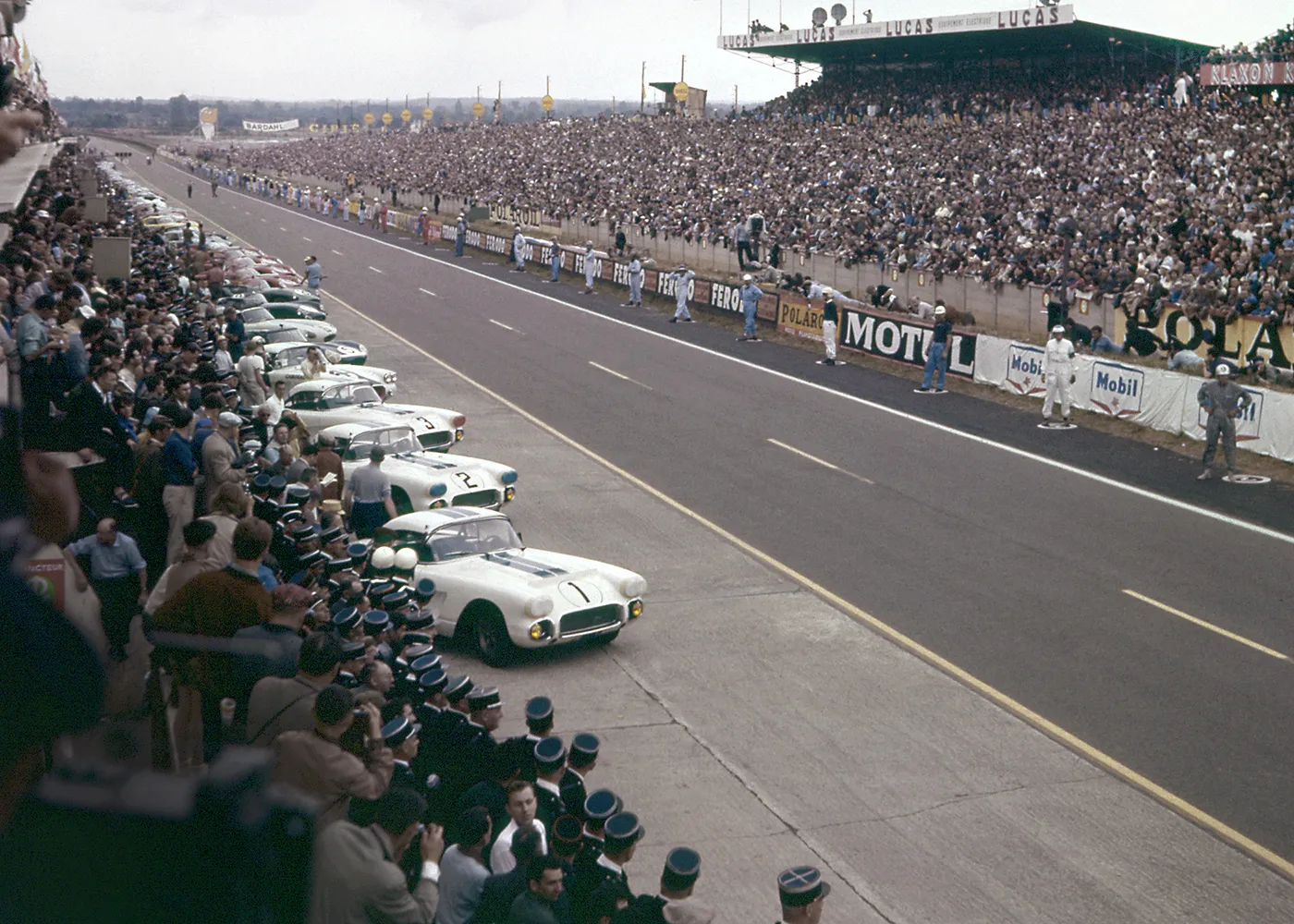Background
In 1922, Charles Faroux and George Durand created France's automobile Club De L'ouest race. In a span of 24 hours, cars were tested for endurance and performance. Meanwhile, in Detroit, Michigan, Ford had no idea that Faroux and Durand’s race, eventually named Le Mans, would change Ford forever.

Original ad for the Ford Mustang, 1964, MotorSportsImages.com

Le Mans start, 1966, MotorSportsImages.com
After World War II, car ownership became a symbol of success and upward mobility in a whole new fashion. The number of Americans who owned cars had increased exponentially. For the young people, money wasn't quite as tight as it had been for their parents. A car wasn't just a vessel to get from point A to point B. It was a way to show personality and style.
As for the baby boomers who now had disposable income, they wanted to step away from the boxy looks that Ford’s cars had. The automotive industry was beginning to turn over a new leaf and make cars that focused on speed, power, and customization.
"The 24 hours at Le Mans was [and still is] a sports car race. But, in the 1950s and 1960s it was more than that. It was the most magnificent marketing tool the sports car industry has ever known renowned. Manufacturers built street legal machines that would prove on the race track that their cars were the best in the world."
- A.J. Baime, author of Go Like Hell